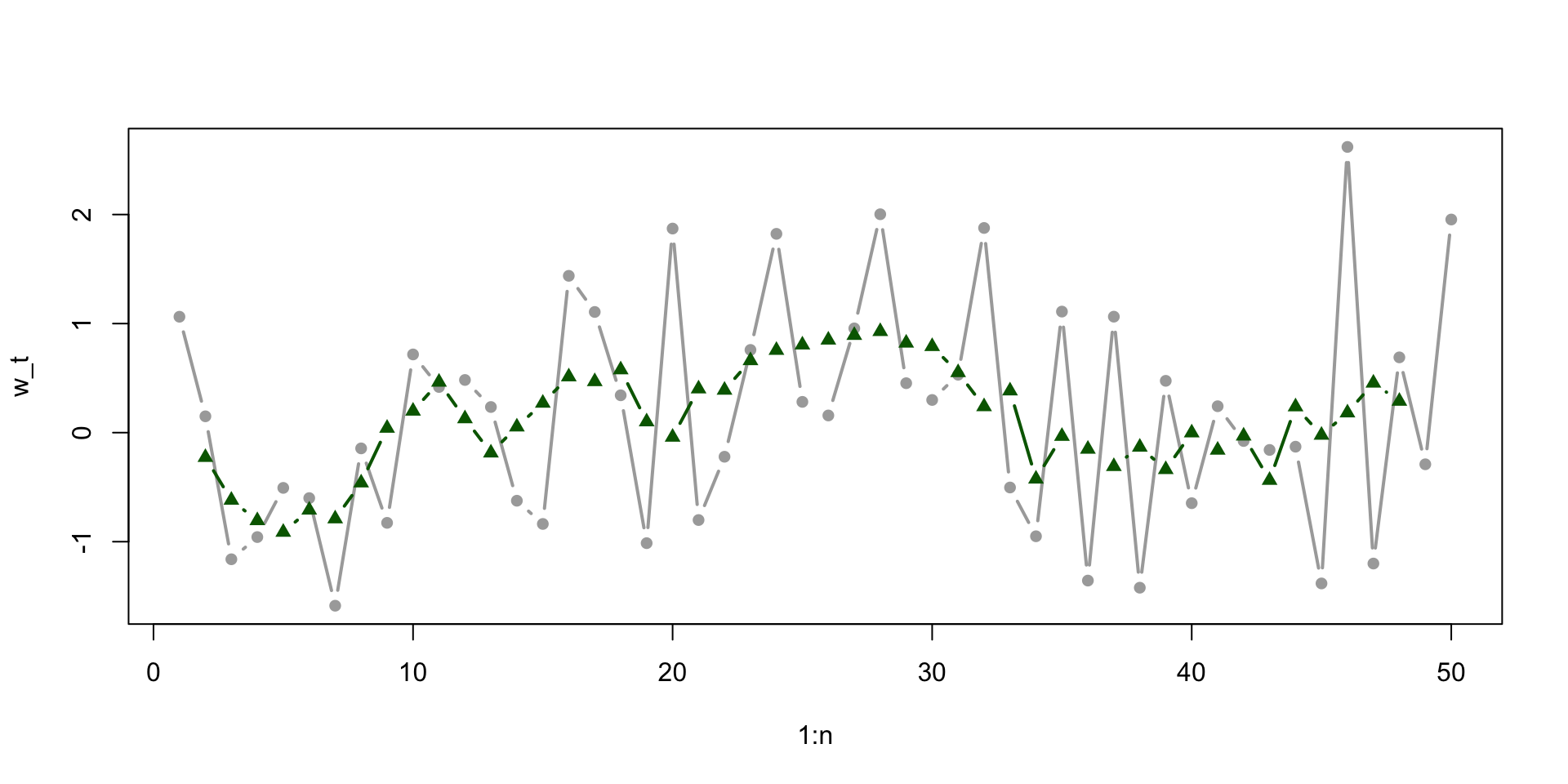v_t w_t w_t1 w_t2
[1,] NA -0.834 NA NA
[2,] NA 0.799 -0.834 NA
[3,] 0.043 0.163 0.799 -0.834
[4,] 0.752 1.292 0.163 0.799
[5,] 0.491 0.018 1.292 0.163
[6,] 0.435 -0.006 0.018 1.292
[7,] 0.163 0.476 -0.006 0.018
[8,] 0.652 1.486 0.476 -0.006
[9,] 0.592 -0.186 1.486 0.476
[10,] 0.778 1.034 -0.186 1.486
[11,] -0.016 -0.896 1.034 -0.186
[12,] 0.006 -0.121 -0.896 1.034
[13,] -0.475 -0.408 -0.121 -0.896
[14,] -0.170 0.019 -0.408 -0.121
[15,] -0.164 -0.102 0.019 -0.408
[16,] -0.727 -2.098 -0.102 0.019
[17,] -0.798 -0.195 -2.098 -0.102
[18,] -0.996 -0.697 -0.195 -2.098
[19,] -0.145 0.457 -0.697 -0.195
[20,] 0.225 0.914 0.457 -0.697
[21,] 0.895 1.314 0.914 0.457
[22,] 0.410 -0.998 1.314 0.914
[23,] -0.048 -0.459 -0.998 1.314
[24,] -0.546 -0.181 -0.459 -0.998
[25,] -0.252 -0.116 -0.181 -0.459
[26,] -0.105 -0.017 -0.116 -0.181
[27,] -0.227 -0.547 -0.017 -0.116
[28,] -0.052 0.408 -0.547 -0.017
[29,] -0.231 -0.555 0.408 -0.547
[30,] -0.168 -0.356 -0.555 0.408
[31,] -0.328 -0.074 -0.356 -0.555
[32,] -0.608 -1.393 -0.074 -0.356
[33,] -0.604 -0.345 -1.393 -0.074
[34,] -1.214 -1.904 -0.345 -1.393
[35,] -0.917 -0.503 -1.904 -0.345
[36,] -0.564 0.715 -0.503 -1.904
[37,] 0.173 0.306 0.715 -0.503
[38,] 0.572 0.694 0.306 0.715
[39,] 0.361 0.083 0.694 0.306
[40,] 0.281 0.065 0.083 0.694
[41,] 0.308 0.776 0.065 0.083
[42,] 0.413 0.397 0.776 0.065
[43,] 0.162 -0.686 0.397 0.776
[44,] -0.371 -0.824 -0.686 0.397
[45,] -0.745 -0.725 -0.824 -0.686
[46,] 0.026 1.627 -0.725 -0.824
[47,] 0.733 1.298 1.627 -0.725
[48,] 0.424 -1.653 1.298 1.627
[49,] -0.927 -2.427 -1.653 1.298
[50,] -1.123 0.710 -2.427 -1.653












